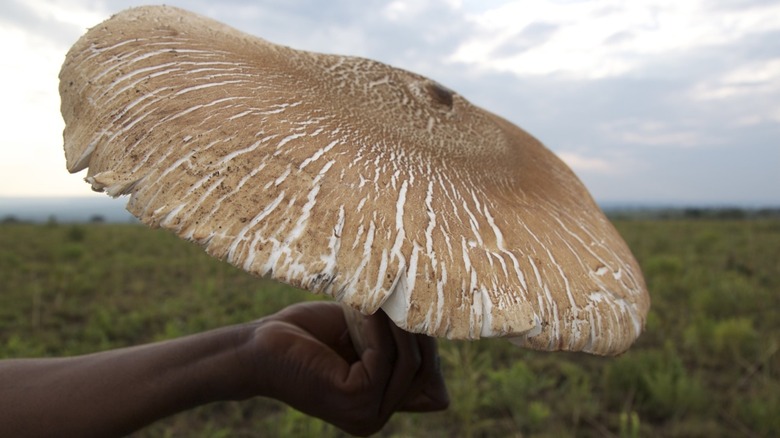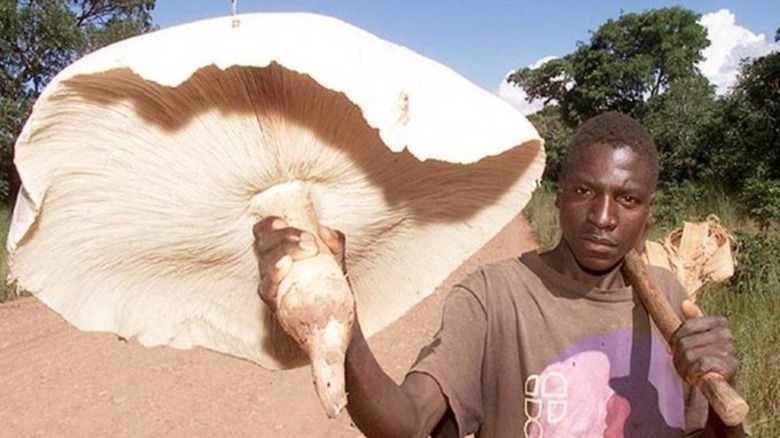Termitomyces Titanicus: The Largest Mushroom You Can Eat
Mushrooms are such a common feature in so many of our diets that it's easy to overlook just how bizarre they really are. The BBC points out that, as fungi, mushrooms are technically neither plants nor animals, and it may come as somewhat of a shock to learn they have more in common with us than the vegetables in our gardens, at least biologically. For starters, they absorb oxygen and output carbon dioxide, just as animals do. While plants feed on sunlight, fungi feed on other organisms, just as we do. Though they don't have brains, Prospect Magazine reveals that fungi have something similar to a neural network and many species display signs of "intelligence," such as the ability to grow through a maze and find the shortest path to the exit.
This knowledge makes mushrooms' role as a popular meat alternative seem all the more appropriate. From mushroom burgers to vegan stroganoff, its earthy, umami-packed flavor is versatile enough to adapt to nearly any dish. Every home cook ought to be familiar with a few basic types of mushrooms like cremini, morel, and maitake. But what if you're in the mood for something more adventurous? Let's say you've got a go big or go home mentality. If that's the case, you should check out the world's largest edible mushroom — termitomyces titanicus.
This massive mushroom has a symbiotic relationship with termites
Termitomyces titanicus is native to West Africa and Zambia, achieving particular popularity in the latter, where foraged mushrooms are instrumental to local cuisine, per Atlas Obscura. The cap of these giant mushrooms can reach a diameter of just over three feet, looking like a small parasol. They are said to have a somewhat smokey flavor and a notably meaty texture. Despite being a common item in Zambian markets for generations, Earthly Mission notes that this particular mushroom species was unacknowledged by Western science until 1980, at which point it would receive its official moniker.
Looking at the name "termitomyces" you might already have guessed that there is a link between this mushroom and that oh-so-dreaded pest, the termite. Earthly Mission explains that termitomyces titanicus grows out of termite nests, having a symbiotic relationship with the insects. The mushroom feeds on termite feces while the termites get added food from decaying fungal tissue. This mushroom relies on termites to spread its spores, and scientists believe it grows to such massive sizes to improve the odds of a termite passing by and picking up one of those precious spores. Whatever the reason for its size, it is certainly a boon to the locals, as a single cap can provide dinner for an entire family.

